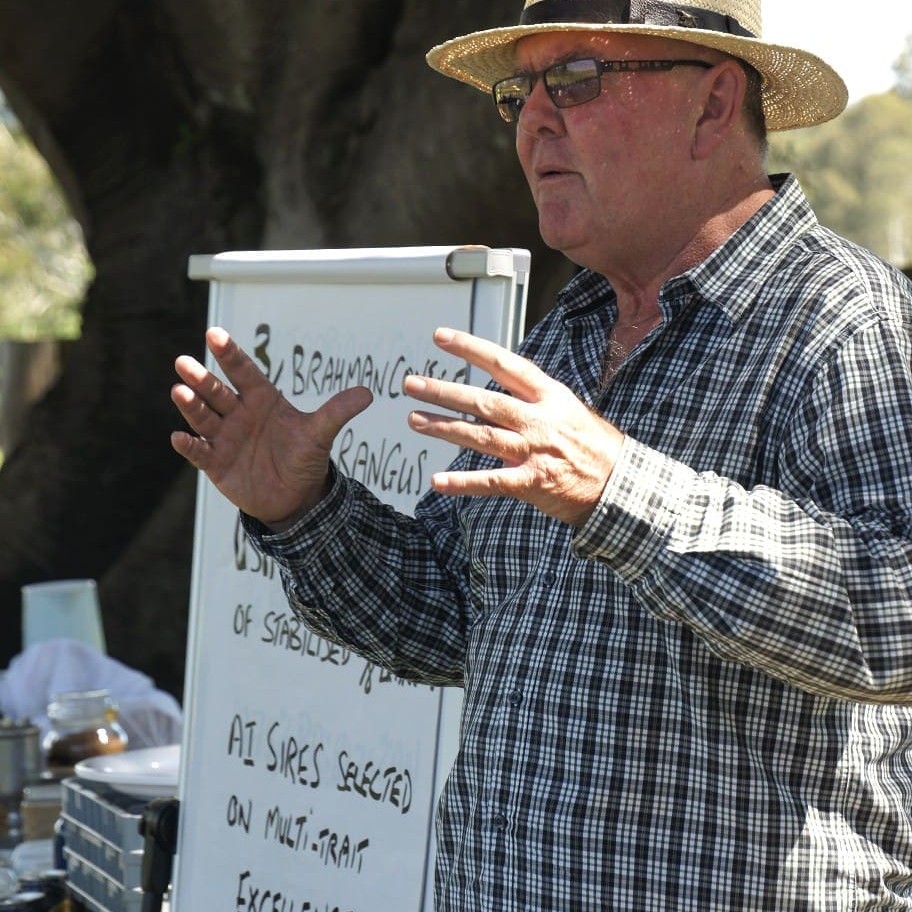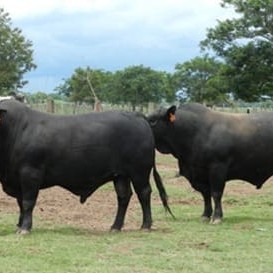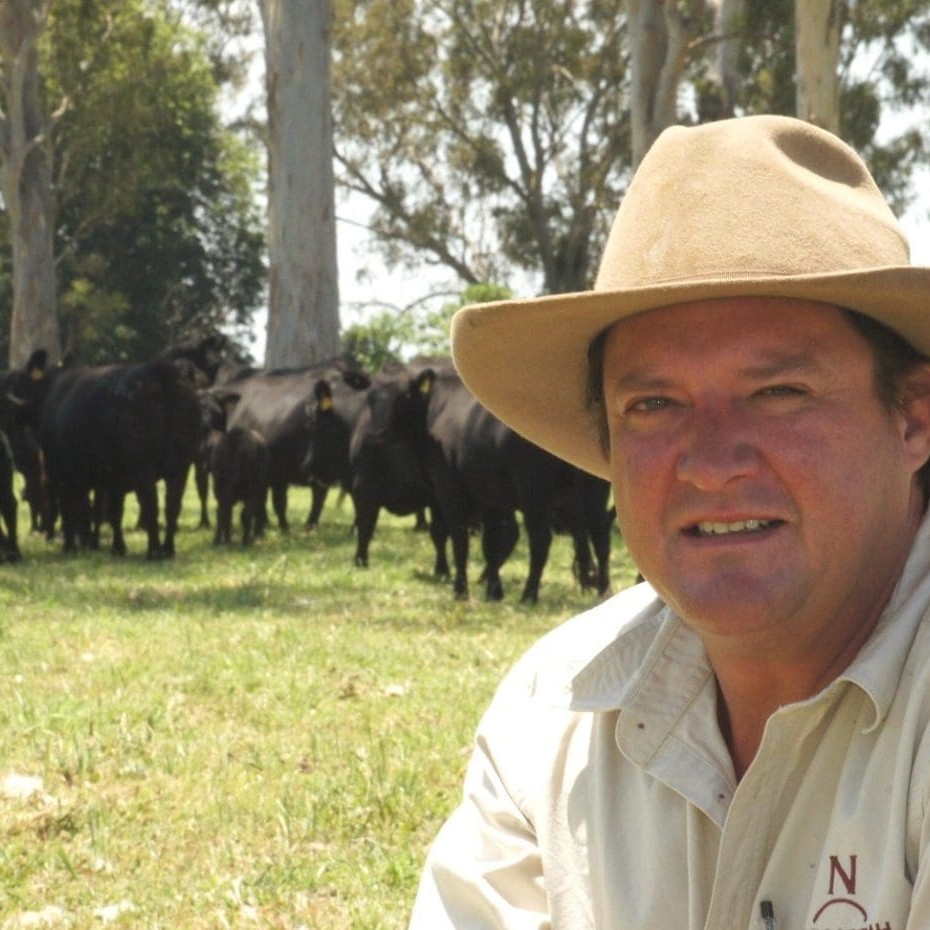 Australia is lagging behind international competitors in its level of genetic progress being made through artificial breeding, judging by comments made by two well-known industry stakeholders who visited South America in December.
Australia is lagging behind international competitors in its level of genetic progress being made through artificial breeding, judging by comments made by two well-known industry stakeholders who visited South America in December.
Genetics consultant Don Nicol, who has worked with some of the biggest beef breeding development programs in Australia over the past 30 years, and Nick Cameron, general manager of the Nindooinbah AB centre near Beaudesert, gave a brief account of their findings during a recent agent’s information day at Nindooinbah.
One of their key goals in the visit was to benchmark Nindooinbah’s own AB productivity performance against that being achieved in South America.
It had proved impossible to benchmark that performance within Australia, because nobody else in this country was doing AB programs of this type, on this scale, Mr Nicol said.
“We were staggered to find the level of AB technology that is being adopted in countries like Argentina, and the scale on which it is being applied,” he said.
The use of a new technology called fixed-time AI was now widespread in Brazil and Argentina.
Fixed time AI relies on the operator synchronising the heat cycles in females, negating any need for heat checking. At a certain point in time, depending on the program, every animal that has been synchronised is inseminated.
“The amount of fixed-time AI going on, and the standards of semen that the Argentineans and Brazilians expect was a revelation to us,” Mr Nicol said.
“They are finding a ten percent difference in strike-rate between the top animals and the performance of average semen. We spoke to operators who were contract-inseminating tens of thousands of cattle each year, who budget on a 50 percent strike rate, but who in fact get much higher than that,” he said.
“All the stops are pulled-out to ensure that high conception rates are achieved, with nutrition and treatment, and any result below that expected puts the focus right back on semen quality.”
In terms of embryo transfer, the pair discovered that Brazil is now doing about 70 percent of the world’s in-vitro fertilisation of cattle, greatly pushing the genetic improvement envelope.
“They are moving forward in terms of genetic progress at a rate that we found very difficult to absorb,” Mr Nicol said.
“In its favour, Argentina does not have the wild country in its northern regions like Australia does, where mating cannot be controlled over a set period. Controlled mating appears to be almost universal across the country,” he said.
Instead of manual palpation as a means of pregnancy testing, scanning technology is widely used, scanning at 30-40 days of pregnancy so operators can immediately make management decisions about pregnants and non-pregnants.
As it has in Australia, the herd in Argentina is moving north into the tropics, as more fertile southern land is converted to soybean and maize cropping. As that has happened, the uptake of Brangus cattle has been very strong: there is now something like 18 million Brangus females in Argentina, which is getting close to Australia’s entire herd size.
 About 2700 bulls are currently sold per year at Brangus Association-sanctioned sales – an annual increase of 500 bulls since year 2000. While three-eighth is the preferred Brahman percentage, higher content animals are bred in the northern zones and the percentage content is cleverly tracked through the country’s genetic evaluation program (ErBra).
About 2700 bulls are currently sold per year at Brangus Association-sanctioned sales – an annual increase of 500 bulls since year 2000. While three-eighth is the preferred Brahman percentage, higher content animals are bred in the northern zones and the percentage content is cleverly tracked through the country’s genetic evaluation program (ErBra).
The Brangus Association in Argentina has a strong genetic evaluation program like BreedPlan, now focussing strongly on improved carcase genetics using ultrasonic scanning of weight-recorded yearling bulls and heifers.
Nick Cameron was particularly impressed with South America’s structured breeding programs, especially in the Brangus herds, on which the pair tended to focus.
“We saw lines of cattle where the owners have bred 5-7 generations stabilised on a specified Indicus percentage – ranging from three-eighths to 50-50s, and five–eighths further north.
Those cattle come out extremely uniform, which was a real eye-opener,” Mr Cameron said.
“In general the top-level of Brangus bulls we inspected had some common features. As in the rest of South America, a tight sheath with good prepuce control was evident. Bulls are generally scored for sheath, muscularity, maturity and adaptation at weaning and 18 months. Scrotal size is generally acceptable; many of the studs also breed Angus, so the scrotal emphasis was expected and in Argentina every second person you meet in the beef industry is a vet.”
Frame size was moderate at about score 6, with the current trend towards an earlier maturing, well-muscled frame 5-6 animal.
“We were told that mature cow size is an issue in the tough sub-tropical zones where the Brangus bulls are to perform, with a 450-470kg cow being the ideal,” Mr Cameron said.
“Cows are run hard, at relatively higher stocking rates than Australia and a big cow is unlikely to survive long in herds with short mating seasons and annual pregnancy testing.”
Structural soundness was generally good in the cattle inspected, many being raised on sandy soils where poor foot and claw genetics would have been evident if present.
While that Argentinean herd footprint is moving north into the tropics, they are taking technologies with them that would normally be associated with closer managed herds in the temperate zone, Don Nicol said.
“While in some cases they may be starting from a relatively low base, it is the speed of improvement that is impressive,” he said.
While the South Americans had a reputation for having access to cheap labour, making AB work easier, that advantage was in decline.
“It used to take ten gauchos to equal one Australian stockman’s wages. Now it’s about four,” he said. “But it’s the skill level in stockmen that they have: they can all preg-test and inseminate.”
Whereas a decade ago feedlots were rare, in the last few years, some 50pc of the cattle slaughtered in Argentina have been finished in feedlots, Mr Nicol said.
The domestic demand was for a lighter steer (430kg average liveweight) similar to the lighter-end of Australian supermarket weight ranges.
Increasingly, early weaning has become a fact-of-life with the variable seasons being experienced across South America over the last few years. The preferred system now is to wean calves into a 70-day feedlot feeding program to finish them for the local market.
Strong prospects for Nindooinbah's Inaugural female sale
 Euan Murdoch’s Nindooinbah enterprise has rapidly grown to become one of Australia’s largest and best developed artificial breeding centres. It is embarking on a large-scale UltraBlack breeding program (see previous Beef Central article “UltraBlacks deliver 'adapted Angus' solution for northern herds”).
Euan Murdoch’s Nindooinbah enterprise has rapidly grown to become one of Australia’s largest and best developed artificial breeding centres. It is embarking on a large-scale UltraBlack breeding program (see previous Beef Central article “UltraBlacks deliver 'adapted Angus' solution for northern herds”).
Open day visitors heard that this season alone, Nindooinbah is carrying out an ET program across 1500 recip females, and is producing a similar number of AI calves, across Angus, UltraBlack and Brangus genetics.
Ultimately, Nindooinbah’s aim in its ET program is to reduce the cost of an embryo to something close to that of a straw of semen, without compromising conception rates.
The scale of the enterprise means it can greatly accelerate the genetic progress being made, and generate large numbers of elite UltraBlack calves in a relatively short timeframe.
The genetic building-blocks for the UltraBlack program started with the purchase of 650 high-genetic merit stud Angus cows, including the purchase of complete year drops of calves, bought from Lawsons Angus, one of Australia’s pre-eminent Angus breeders.
These heavily performance-recorded females provide an excellent maternal background, and include an elite group of about 50 donor cows used in a large-scale ET program.
The Angus females are being mated or flushed using semen from trait-leading multi-generation-stabilised three-eighths US Brangus sires mainly from the famous Brinks Brangus or Camp Cooley programs in Texas. These sires have been selected with a strong emphasis for carcase traits, marbling and fertility.
The first 220 selected heifer progeny from these matings will be offered at Nindooinbah’s Inaugural Female Sale, scheduled to take place on-property on March 23. Visitors viewing the sale cattle over recent weeks have remarked on the remarkable consistency in type and conformation across the mob.
Their male siblings will feature in the Inaugural Nindooinbah Bull Sale (UltraBlack, Angus and Brangus) set down for October 5.
The UltraBlack heifer portion being prepared for sale now will be around 18 months old at sale time, PTIC to Angus, UltraBlack and Brangus bulls. All will be registered with Angus Breedplan, on the society’s Multi-Breed Register, with a full suite of EBVs for production and meat quality traits – as would typically be seen in an extensively measured Angus seedstock herd.
The female sale will also include about 120 PTIC stud Lawson Angus blood Angus females, ranging in age from four to nine years, including elite donor cows in the top five percent of EBVs for the Angus breed.
-
An International Brangus Congress will be one of the key features at this year’s Beef Australia 2012 Expo in Rockhampton in May.
